#pisiformis
Photo

*220808 植物ポスト空いてたのでとりあえずモニラリア挟んどこ🧖🪴🏠 #monilaria #モニラリア #多肉植物 #サボテン #塊根植物 #cactus #succulent #caudex #家づくり #バルコニー #obconica #pisiformis #moniliformis #meyeri https://www.instagram.com/p/Cg-9oCLLjWX/?igshid=NGJjMDIxMWI=
#monilaria#モニラリア#多肉植物#サボテン#塊根植物#cactus#succulent#caudex#家づくり#バルコニー#obconica#pisiformis#moniliformis#meyeri
4 notes
·
View notes
Photo
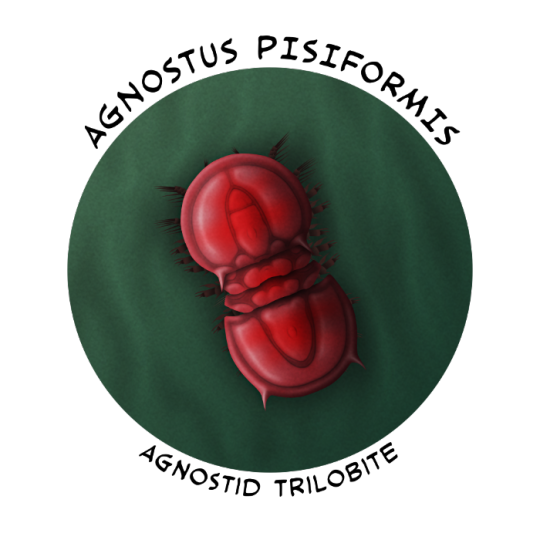
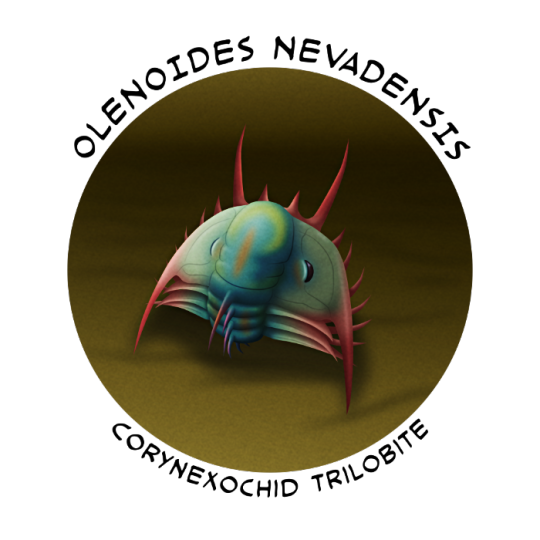
Cambrian Explosion #54: Trilobita – Transform and Roll Up
Most trilobites were able to roll themselves up into a protective ball – a behavior known as enrollment or volvation – exposing just their heavily armored backs to attackers. They're often found fossilized curled up like this, and rare preservation of soft tissues shows that they had a complex system of muscles to help them quickly achieve this pose while simultaneously tucking their antennae and all their limbs safely inside their enrolled shells.
Some species also developed sharp defensive spines and spikes that jutted out when they enrolled, making themselves even more daunting to potential predators in one of the earliest known examples of an evolutionary "arms race".
———
The agnostids were a group that first appeared in the early Cambrian very soon after the redlichiids and ptychopariids, and lasted until the end of the Ordovician about 444 million years ago. They probably evolved from some of the first ptychopariids*, and were highly specialized compared to other early trilobites, with large head and tail shields that usually looked almost identical, sometimes lacking eyes entirely, and only having two or three thorax segments – showing some convergent similarities to their nektaspid cousins.
( * There's been some debate about whether agnostids are actually trilobites, or whether they're closely related "trilobitomorph" artiopodans or even stem-crustaceans that just happened to somewhat resemble trilobites. This is due to soft-tissue preservation revealing limb anatomy that was very different from trilobites and looked more like the legs of crustaceans. But despite some other oddities, like having six pairs of head appendages instead of trilobites' usual four, the rest of their anatomy still places them firmly as artiopods, and as either trilobites or almost-trilobites.)
Found all around the world mainly in deeper-water environments, agnostids probably spent most of their time crawling around on the sea floor, but they may also have been able to swim in a semi-enrolled posture. They're also sometimes found preserved sheltering inside the empty hard parts of other animals, such as hyolith shells or Selkirkia tubes.
Some agnostid fossils have been found clustered in large numbers around the remains of other animals, suggesting they may have been opportunistic predators and scavengers, sometimes even cannibalising each other.
Agnostus pisiformis was a typical member of this group, known from the mid-to-late Cambrian (~506-492 million years ago) from sites including Sweden, Siberia, England, Wales, and Canada – widespread and common enough that it can be used as an index fossil to help date rock layers.
It grew to about 1cm long (0.4"), and while its front and back ends looked very similar the tail shield can be identified by a small pair of spines on its outer edge. Despite having only a couple of articulated body segments to work with it was capable of rolling up so its head and tail shield met and fully enclosed its body, forming a pea-sized protective capsule.
———
The corynexochids were another major group of trilobites to appear in the early Cambrian, descending from early redlichiids. They were one of the longest-lived trilobite lineages, lasting until the late Devonian about 376 million years ago, and often had large tail shields and spines adorning their bodies.
Olenoides nevadensis was a fairly rare species of corynexochid, known from the Wheeler Shale (~507 million years ago) and Marjum Formation (~505 million years ago) in Utah, USA
Up to about 5cm long (2"), it was very spiky for a Cambrian trilobite, with long "cheek" spines, pointy side lobes on its body segments, a row of spines along its back, and four pairs of spines on its tail shield. Like some other early trilobites it wouldn't have quite been able to roll into a tight ball, instead forming more of a "cylinder" – with its bristling spiny segments protecting its partially-exposed sides, and its tail shield lining up with its head to present an intimidating row of spikes.
———
Nix Illustration | Tumblr | Twitter | Patreon
#science illustration#paleontology#paleoart#palaeoblr#cambrian explosion#cambrian explosion 2021#rise of the arthropods#agnostus#agnostida#olenoides#corynexochida#trilobita#trilobite#artiopoda#euarthropoda#arthropod#panarthropoda#ecdysozoa#protostome#bilateria#eumetazoa#animalia#art#enrollment#volvation
133 notes
·
View notes
Photo
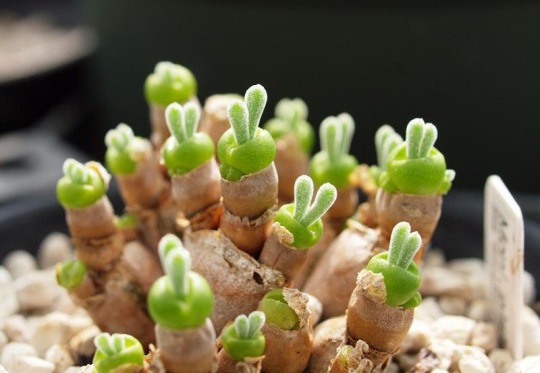
Monilaria pisiformis
5 notes
·
View notes
Photo
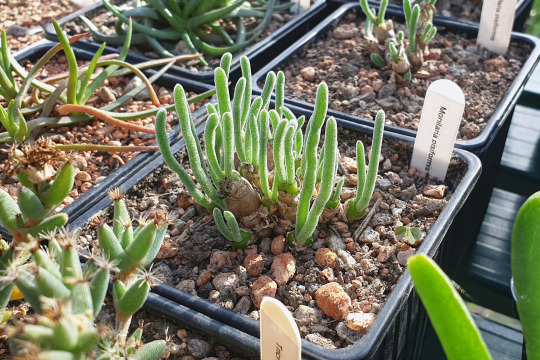
Monilaria pisiformis.
October 2020.
99 notes
·
View notes
Text
Protected-Guard (fenbendazole) Canine Dewormer for Canine, 4gm pouch (ea. pouch treats 40lbs.)
Protected-Guard (fenbendazole) Canine Dewormer for Canine, 4gm pouch (ea. pouch treats 40lbs.)
Worth: (as of – Particulars)
For the remedy and management of Roundworms (Toxocara canis Toxascaris leonina) Hookworms (Ancylostoma caninum Uncinaria stenocephala) Whipworms (Trichuris vulpis) and Tapeworms (Taenia pisiformis). Protected-Guard Canine is secure to be used in puppies 6 weeks or older and grownup canines together with pregnant bitches. Don’t deworm a canine or pet that’s sick. Seek…
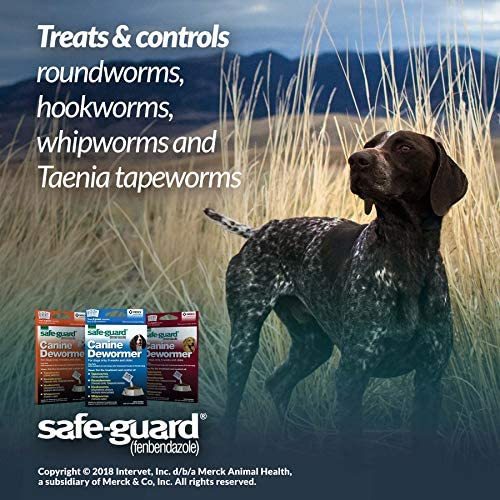
View On WordPress
0 notes
Photo

. みなさんの人気に乗っかって #モニラリア を去年初播種 夏に2つダメにしたけど なんとかここまで☺︎︎ ラベルの間違いに今気づく🤣 . #Monilariapisiformi #Monilaria #pisiformi #Monilaria_niche #ピシフォルミス #ピシフォルミス_niche #実生好き #実生_niche #seedlings #多肉植物 #多肉 #succulents #succulent #nonfilter #岩手 #岩手多肉 — view on Instagram https://ift.tt/2StUIyn
0 notes
Text
15% OFF this & all at otcpets.com/heartgard
POPANTEL (Praziquantel, Oxantel and Pyrantel Embonate) is a treatment for gastro-intestinal parasites for Dogs. POPANTEL controls Roundworms (Toxocara canis, Toxascaris leonina), Whipworms (Trichuris vulpis) Hookworms (Ancylostoma caninum, A. braziliense, Ancylostoma ceylanicum, Uncinaria stenocephala) and Tapeworms (Dipylidium caninum, Taenia ovis, T. pisiformis, T. hydatigena and Echinococcus granulosus (hydatid tapeworm)). This product does not control heartworm.

from OTC Pet Deals https://otcpetdeals.wordpress.com/2019/08/28/15-off-this-all-at-otcpets-com-heartgard/
0 notes
Photo

Full resolution here
Row 1:
Aloinopsis peersii (KKS 14.01.17)
Aloinopsis rosulata (KKS 14.01.17)
Bijlia tugwelliae (KKS 14.01.17)
Cheiridopsis cuprea (BCSS 17.01.17)
Cheiridopsis denticulata (KKS 24.11.16)
Cheiridopsis peculiaris (KKS 24.11.16)
Row 2:
Cheiridopsis pillansii (KKS 24.11.16)
Conophytum calculus (KKS 14.01.17)
Conophytum loeschianum (KKS 14.01.17)
Conophytum minutum (KKS 24.11.16)
Conophytum pillansii (bought as mix sown 2015/16)
Conophytum uviforme (KKS 23.11.16)
Row 3:
Gibbaeum shandii (KKS 23.11.16)
Gibbaeum velutinum (KKS 23.11.16)
Lapidaria margaretae (KKS 28.10.16)
Marlothistella stenophylla (KKS 15.01.17)
Mitrophyllum mitratum (BCSS 07.01.17)
Namaquanthus vanheerdei (KKS 15.01.17)
Row 4:
Odontophorus nanus (KKS 15.01.17)
Oophytum oviforme (KKS 24.11.16)
Pleiospilos bolusii (BCSS 07.01.17)
Rhinephyllum muirii (aucoconuts 30.10.16)
Titanopsis hugo-schlecteri (KKS 15.01.17)
Vanheerdea divergens (BCSS 07.01.17)
Not included because I've since potted them into separate containers: Monilaria pisiformis + Sphalmanthus scintillans.
KKS = Kenni Koala Seeds
BCSS = British Cactus & Succulent Society annual seed list
I'm currently awaiting this year's seed list, which should arrive within the next few weeks along with the December edition of the quarterly magazine. This time I won't delay in sending off for the seeds!
December 3, 2018
See my decent photos here: agavex-photography.
0 notes
Text
Genes, Vol. 10, Pages 507: Comparative Transcriptomic Analysis of the Larval and Adult Stages of Taenia pisiformis
Taenia pisiformis is a tapeworm causing economic losses in the rabbit breeding industry worldwide. Due to the absence of genomic data, our knowledge on the developmental process of T. pisiformis is still inadequate. In this study, to better characterize differential and specific genes and pathways associated with the parasite developments, a comparative transcriptomic analysis of the larval stage (TpM) and the adult stage (TpA) of T. pisiformis was performed by Illumina #RNA sequencing (#RNA-seq) technology and de novo analysis. In total, 68,588 unigenes were assembled with an average length of 789 nucleotides (nt) and N50 of 1485 nt. Further, we identified 4093 differentially expressed genes (DEGs) in TpA versus TpM, of which 3186 DEGs were upregulated and 907 were downregulated. Gene Ontology (GO) and Kyoto Encyclopedia of Genes (KEGG) analyses revealed that most DEGs involved in metabolic processes and Wnt signaling pathway were much more active in the TpA stage. Quantitative real-time PCR (qPCR) validated that the expression levels of the selected 10 DEGs were consistent with those in #RNA-seq, indicating that the transcriptomic data are reliable. The present study provides comparative transcriptomic data concerning two developmental stages of T. pisiformis, which will be of great value for future functional studies on the regulatory mechanisms behind adult worm pathogenesis and for developing drugs and vaccines against this important parasite. http://bit.ly/2Jn5amp
0 notes
Photo
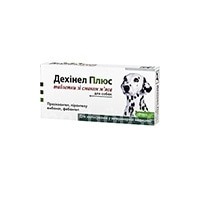
+Дехинел Плюс для собак и щенков всех поро на 10 кг KRKA Дехинел Плюс для собак и щенков всех поро на 10 кг KRKA дегельминтизация собак, включая щенков, при поражении нематодами и цестодами: аскаридами — Toxocara canis, Toxascaris leonina (половозрелые и личиночные формы); анкилостомами — Uncinaria stenocephala, Ancylostoma caninum (половозрелые формы); власоглава — Trichuris vulpis (половозрелые формы); цестодами — Echinococcus granulosus, E. multilocularis, Dipylidium caninum, Taenia hydatigenia, T. pisiformis, T.multiceps, Mesocestoides lineatus .
0 notes
Photo

Metacestodos (Cysticercus) encontrado en la cavidad abdominal (hígado, alrededor del primer tercio del intestino delgado y del último tramo del recto) de dos conejos. Estos son estadios larvarios de algunos tipos de Taenias, estos en particular tienen en su interior un escolex (cabeza de la tenia adulta) invaginado. La Tenia al que pertenecen es una Taenia pisiformis, un Platelminto de la clase Cestoda, familia Taeniidae cuyo huésped final son los perros, con los roedores y lagomorfos (conejos y liebres) como huéspedes intermediarios. En estos últimos encontramos los metacestodos en la cavidad abdominal y en los perros encontramos a las Tenias adultas en intestino delgado.
🐰🐶🐛
PD: me costó encontrar ambos estadios
PD2: hago la conclusión en base al origen de los estadios y el ciclo de vida del parásito, podría llegar a equivocarme pero aun así están muy padres.
#Taenia #metacestodo #veterinaria #conejo #perro
0 notes
Text
Science meets art: Tiny trilobite gets huge makeover
At less than a centimeter in size, Agnostus pisiformis might not look like much, but a new series of larger-than-life sculptures is giving the arthropod its due as one of the most ubiquitous and recognizable Cambrian fossils. https://www.environmentguru.com/pages/elements/element.aspx?utm_source=dlvr.it&utm_medium=tumblr&id=5937906
0 notes
Photo

Monilaria pisiformis.
September 2019.
51 notes
·
View notes
Text
New Post has been published on 3dbot.ru: Технологии 3d печати
New Post has been published on http://blog.3dbot.ru/raznoe-o-3d/drevnejshee-sushhestvo-zemli-raspechatali-na-3d-printere.html
Древнейшее существо Земли распечатали на 3D принтере
Специалисты из Швеции и Дании распечатали на 3D-принтере подробную модель Agnostus pisiformis — беспозвоночного, которое жило около 500 миллионов лет назад в кембрийский период. Реконструированное животное относится к трилобитам — одним из древнейших вымерших членистоногих, населявших древние моря. Об этом сообщает издание Gizmodo.
Вид A.pisiformis был описан еще в 1729 году шведским ученым Магнусом фон Бромелем (Magnus von Bromell). С тех пор ученые детально изучили внешние оболочки животного, достигавшего не более одного сантиметра в поперечнике, а также внутреннюю структуру, образованную мягкими тканями. На основе этих данных художник Эсбен Хорн (Esben Horn) создал несколько крупных скульптур трилобита, которые раскрывают внешний вид существа и его анатомию.
Ранее физики из Имперского колледжа Лондона предложили всем желающим распечатать на трехмерном принтере модель Вселенной. Скульптура дает представление о распределении космического микроволнового фона спустя 380 миллионов лет после Большого взрыва и основана на данных миссии Planck.
0 notes
Text
¿Un alien? Científicos recrean imagen de una criatura de hace 500 millones de años
Nuevo artículo publicado en https://www.prozesa.com/2017/10/01/un-alien-cientificos-recrean-imagen-de-una-criatura-de-hace-500-millones-de-anos/
¿Un alien? Científicos recrean imagen de una criatura de hace 500 millones de años
Especialistas lograron reconstruir en detalle la figura de un artrópodo, de un centímetro de extensión, preservado a la perfección en rocas marinas.
El ya extinguido artrópodo Agnostus Pisiformis vivió hace unos 500 millones de años. Sin embargo, gracias al alto grado de preservación que mantuvieron algunos ejemplares fosilizados en rocas del mar, especialistas han logrado recrear en detalle el aspecto de esta especie, cuyos individuos tuvieron un tamaño de no más de un centímetro de extensión. "El increíble grado de detalle que se ha preservado significa que podemos captar toda la anatomía del animal, que a su vez muestra mucho de la ecología y del modo de vida de la zona en la época en la que vivió", comentó Mats Eriksson, profesor de Geología en la Universidad de Lund, en Suecia, publicó la revista Earth-Science Reviews. Mientras la calidad de la imagen sorprende incluso a los especialistas, los investigadores liderados por Eriksson detallaron que el artrópodo nacía en forma de larva y, cuando llegaba a la edad adulta, desarrollaba un exoesqueleto rígido, con lo cual su cuerpo quedaba protegido por dos escudos, similares a las conchas o caparazón de las almejas. Aunque poco se sabe sobre la vida de esta criatura marina, que habitaba en zonas de la actual Escandinavia, se estima que se alimentaba de materia orgánica que extraía del agua.
Un 'fósil índice'
Las particularidades del artrópodo llevaron a los científicos a definirlo como un 'fósil índice'. Se llama de esta madera a aquellos que existieron sólo en un período puntual, y de acuerdo con la capa de la roca en la que se encuentren, puede datarse con exactitud la época a la que pertenecieron. Además de las imágenes desarrolladas por los científicos, también algunos artistas reprodujeron al Agnostus Pisiformis, aunque a una escala mayor. Para ello utilizaron silicona traslúcida. Sus detalladas reproducciones serán exhibidas en una exposición itinerante sobre animales extraños que habitaron en los mares durante el período Cámbrico de la era Paleozoica. Transcurrido hace más de 500 millones de años, ese lapso se caracterizó por una rápida expansión de la vida, que dio origen a nuevas criaturas. "Es uno de los períodos más emocionantes de la historia de la Tierra", aseguró Eriksson.
0 notes
Text
Древнейшее существо Земли распечатали на 3D-принтере
Древнейшее существо Земли распечатали на 3D-принтере
Специалисты из Швеции и Дании распечатали на 3D-принтере подробную модель Agnostus pisiformis — беспозвоночного, которое жило около 500 миллионов лет назад в кембрийский период.
View On WordPress
0 notes